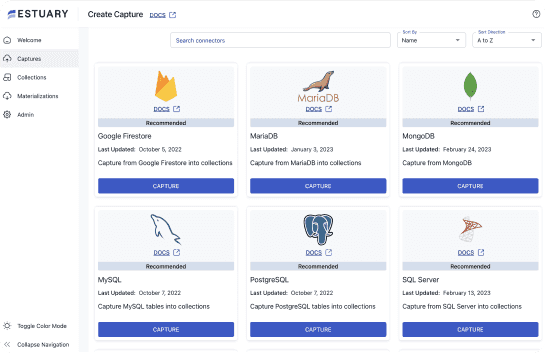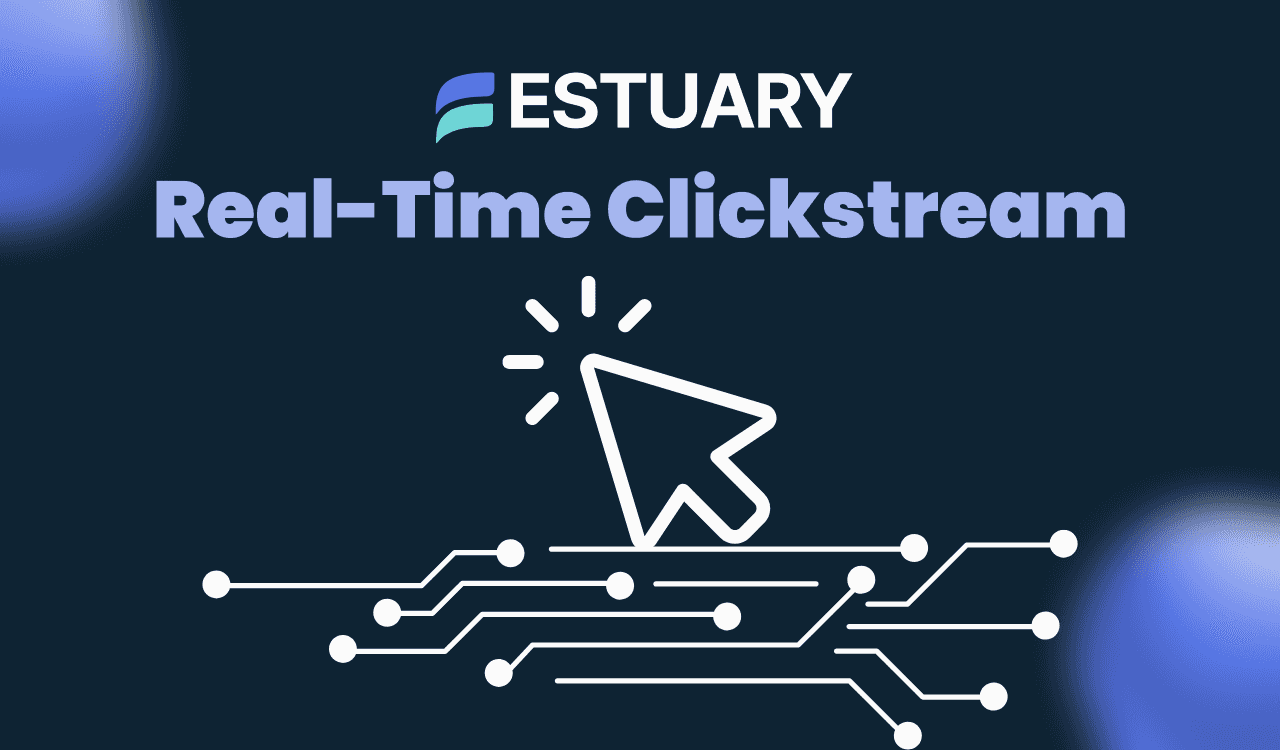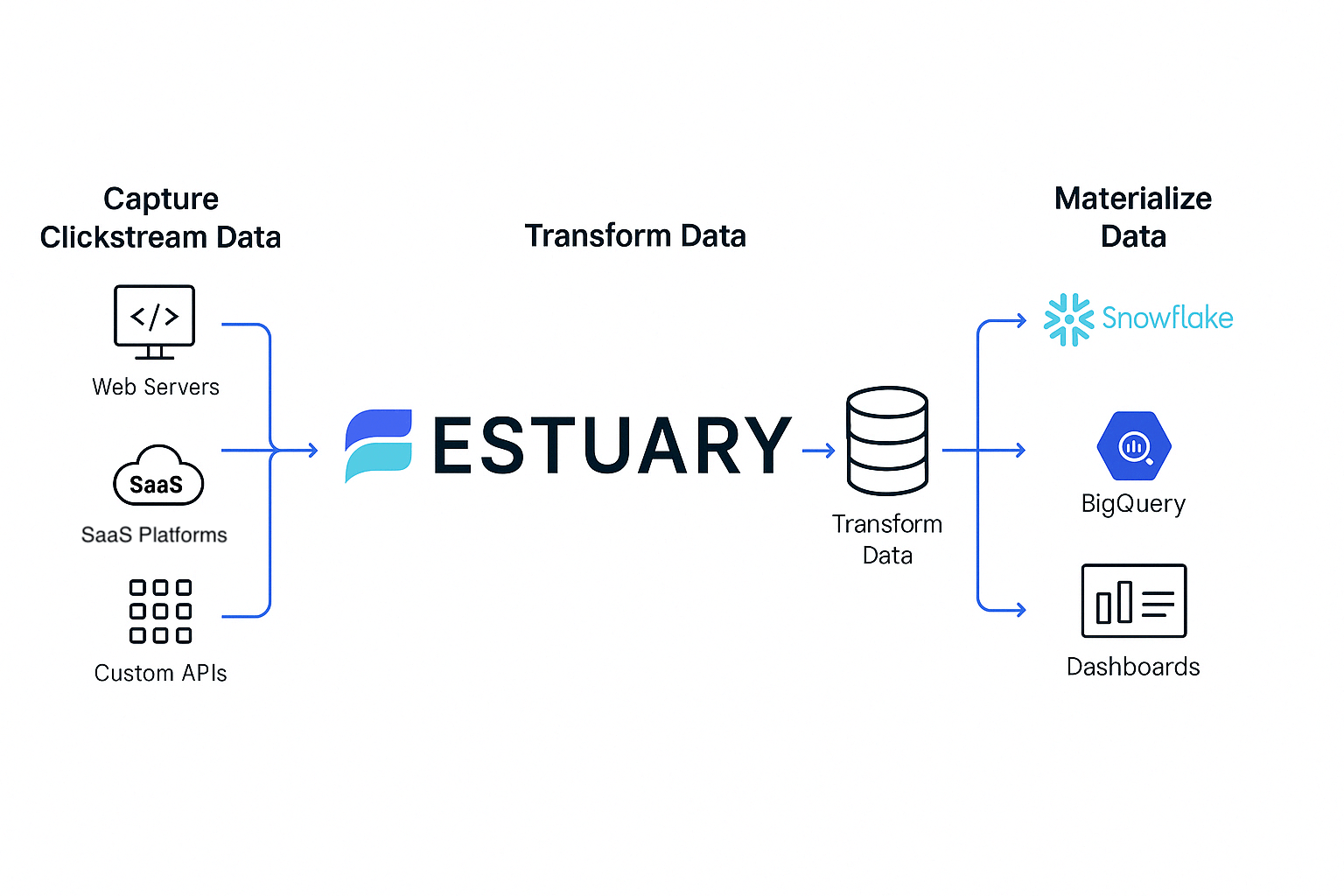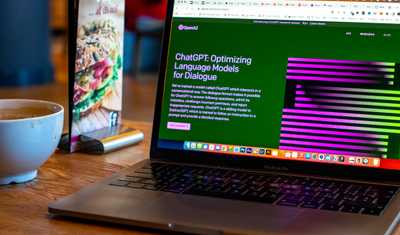
Every digital interaction a user makes — from clicking a product to scrolling a page to abandoning a shopping cart — leaves a trail of behavioral data. This is known as clickstream data: a continuous flow of timestamped events that collectively tell the story of how users engage with a website, app, or platform.
When harnessed effectively, clickstream data becomes a powerful asset for real-time decision-making. Businesses can identify drop-off points in the conversion funnel, personalize user experiences on the fly, detect anomalies in traffic patterns, and rapidly A/B test changes. It’s no surprise that companies leveraging real-time clickstream analytics report a good increase in customer retention.
But capturing and acting on clickstream data in real-time is no small feat. Traditional ETL tools often rely on batch processing, introducing delays that make insights stale. Custom-built streaming architectures typically require significant engineering effort, involving multiple moving parts like Kafka, Spark, and complex monitoring layers — all of which are difficult to scale and maintain.
That’s where Estuary Flow comes in.
Estuary Flow is a real-time data operations platform that enables you to build streaming clickstream pipelines in minutes — no Kafka, Spark, or manual stitching is required. It combines change data capture (CDC), event streaming, and automatic schema handling into a unified, low-code interface, allowing you to ingest, transform, and route clickstream data to analytical destinations like BigQuery, Snowflake, and beyond — all with millisecond latency.
In this guide, we’ll walk through why real-time clickstream analytics matters, how Estuary solves the core challenges, and how you can set up your own streaming pipeline with just a few clicks.
Why Real-Time Clickstream Analytics Matters
Today’s users expect personalized experiences in real-time, and businesses that can’t deliver risk falling behind. That’s why real-time clickstream analytics is critical for modern digital platforms.
Personalization That Adapts Instantly
Clickstream data shows what users are doing right now — pages visited, buttons clicked, and time spent. With a real-time pipeline, companies can react immediately with personalized product recommendations or content suggestions.
Estuary enables this by streaming click events directly into personalization systems, driving higher engagement and conversion rates.
Faster Business Decisions
When clickstream data is live, marketing and product teams can:
- Track campaign performance in minutes
- Trigger instant retargeting
- A/B test UX changes in real-time
Estuary Flow handles the ingestion, enrichment, and delivery of clickstream data to destinations like BigQuery or Snowflake — with millisecond latency.
Proactive Issue Detection
Clickstream data also flags technical issues. If users are abandoning the checkout page, Estuary can stream those anomalies to systems like Datadog or Slack — helping teams fix problems before they escalate.
Industries Benefiting from Clickstream Analytics
Real-time clickstream pipelines aren’t just for e-commerce. They’re delivering value across industries:
- E-commerce: Personalized product recommendations, cart abandonment workflows, dynamic pricing.
- SaaS: Feature usage tracking, onboarding flow optimization, churn prediction.
- Media & Publishing: Personalized content feeds, ad targeting, session drop-off analysis.
- Finance: User behavior monitoring for fraud detection and compliance.
Scenario: Personalization at Scale
An online retailer notices a spike in traffic to a product category. Estuary instantly streams that behavior into its recommendation engine — boosting relevant offers and conversions, while marketing triggers retargeting for drop-offs in the same session.
Overview of Estuary Flow
Estuary Flow is a real-time data integration platform built to simplify the way teams move data across systems. Whether you're ingesting high-volume clickstream events or syncing transactional changes across databases, Flow makes it possible to build powerful pipelines — without writing a line of code.
Core Capabilities
- Real-Time Data Movement: Flow ingests data as soon as it’s generated — no batch delays, no polling.
- Change Data Capture (CDC): Natively supports CDC from databases like PostgreSQL, MySQL, SQL Server, and more — essential when combining clickstream with other behavioral signals.
- Automatic Schema Evolution: Flow adapts to changes in data structure on the fly, which is especially valuable for dynamic, semi-structured clickstream data.
- Low-Code Interface: Build, monitor, and manage pipelines visually or programmatically — ideal for teams of any technical skill level.
- Declarative Configuration: Pipelines are defined in version-controlled specs, making them repeatable, auditable, and CI/CD-friendly.
Why Estuary Is Ideal for Clickstream Pipelines
Clickstream data is high-volume, noisy, and constantly changing. Estuary Flow is purpose-built to handle these challenges:
- Scalable ingestion from sources like web servers, event APIs, or custom logging systems
- Real-time enrichment and transformation without external processing layers like Spark or Flink
- Seamless integration with cloud destinations such as BigQuery, Snowflake, Redshift, and more
Instead of managing Kafka, schema registries, or transformation code, Estuary lets you go from raw events to query-ready data in minutes.
Step-by-Step Guide: Building a Clickstream Pipeline with Estuary Flow
Estuary Flow makes it simple to ingest, process, and route real-time clickstream data with just a few steps. Below is a walkthrough to help you build a pipeline that connects raw user interaction data to a destination like Snowflake or BigQuery — ready for analysis in seconds.
Step 1: Capture Clickstream Data
Start by capturing clickstream data from your website or application. Estuary Flow supports various sources such as:
- Web server logs
- SaaS platforms (e.g., Google Analytics)
- Custom APIs
Using Estuary’s connectors, you can set up a capture with just a few clicks. This data is stored as reusable collections in your own private cloud storage account.
Step 2: Transform Data
Once captured, transform the raw clickstream data into actionable formats. Use streaming SQL or TypeScript within Estuary Flow to clean, aggregate, or enrich the data. For example:
- Remove PII for anonymized user data analytics.
- Aggregate page views per user session.
- Enrich click events with geolocation metadata.
Estuary’s real-time processing ensures that transformations occur with minimal latency. And since transformations run on durable collections, you can transform the same data in different ways, such as anonymizing data for usage analytics while enriching it for real-time personalization and support.
Step 3: Materialize Data
Materialize the transformed data into destinations for analysis:
- Push aggregated metrics to Snowflake for BI dashboards.
- Store enriched logs in Elasticsearch for search and anomaly detection.
- Stream live user activity into vector databases (Pinecone) for AI-driven personalization.
- Route data to ClickHouse to power real-time analytics.
Estuary supports many-to-many distribution, allowing you to send the same dataset to multiple destinations simultaneously.
Practical Applications of Clickstream Pipelines
Clickstream data is more than just a stream of clicks — it’s a live signal of user intent, behavior, and friction. With a real-time pipeline powered by Estuary Flow, teams across your organization can act on these signals instantly.
Here’s how different industries and teams are using real-time clickstream pipelines to drive value:
E-Commerce: Real-Time Personalization
Clickstream events like product_view, add_to_cart, and checkout_start give insight into buying behavior. With Estuary:
- Product recommendations are updated on the fly
- Retargeting campaigns trigger within seconds of cart abandonment
- Dynamic pricing can respond to live demand signals
Use case: Automatically push product impressions to a personalization engine or marketing automation tool via Snowflake or webhooks.
SaaS: Usage Tracking and Churn Prediction
In SaaS platforms, clickstream data reveals feature adoption, onboarding success, and user intent.
- Track which features are most (or least) used in real-time
- Identify drop-off points in onboarding flows
- Stream low-engagement patterns to alert systems for proactive retention
Use case: Send feature usage events to BigQuery and trigger workflows in tools like Intercom or Segment.
Media & Publishing: Content Optimization
For publishers and media companies, every scroll and tap tells a story.
- Adapt content feeds in real-time based on engagement
- Detect article drop-offs and optimize layout instantly
- Stream engagement events to ad platforms for better targeting
Use case: Enrich engagement data and push it to a Snowflake-powered dashboard for editorial insights.
Finance: Behavioral Monitoring & Risk Detection
Even in regulated industries, real-time behavior tracking is key.
- Detect suspicious navigation patterns or session anomalies
- Monitor user interactions during sensitive workflows (e.g., wire transfers)
- Stream behavioral events to fraud detection engines in real time
Use case: Combine clickstream and transaction CDC data into a unified collection and route to machine learning models.
Getting Started with Estuary Flow
Ready to build your first pipeline? Follow these steps:
- Sign up for free on the Estuary Flow dashboard.
- Explore tutorials and guides.
- Join the Slack community for support and best practices.
With Estuary Flow’s no-code interface and powerful features, you’ll be up and running in minutes.
Conclusion
Real-time clickstream data is no longer a luxury — it’s a competitive advantage. From personalizing user experiences to detecting site issues the moment they occur, the ability to act on behavioral signals instantly can transform how teams build, market, and optimize digital experiences.
But traditional ETL tools and batch workflows weren’t designed for this level of speed or scale.
Estuary Flow changes the game by giving you a real-time, no-code platform to capture, transform, and route clickstream data — all with millisecond latency and production-grade reliability. Whether you're an engineer looking to modernize your data stack or a growth team trying to understand your users faster, Estuary makes it simple to unlock the power of real-time analytics.

About the author
Dani is a data professional with a rich background in data engineering and real-time data platforms. At Estuary, Daniel focuses on promoting cutting-edge streaming solutions, helping to bridge the gap between technical innovation and developer adoption. With deep expertise in cloud-native and streaming technologies, Dani has successfully supported startups and enterprises in building robust data solutions.











